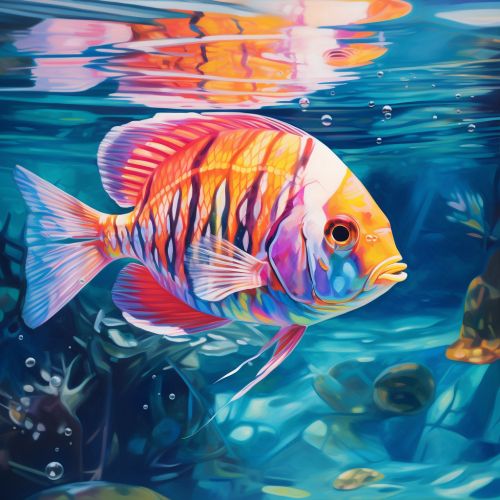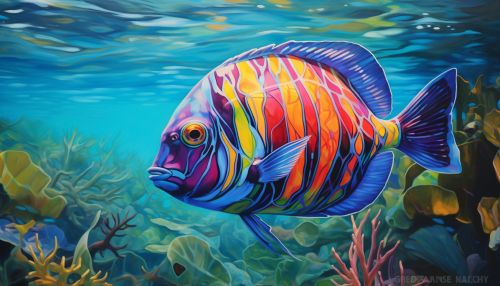Fish
Introduction
Fish are a group of aquatic vertebrates that first appeared during the Cambrian explosion, approximately 530 million years ago. They are a diverse group, with over 34,000 known species, and are found in nearly every aquatic environment, from high mountain streams to the abyssal depths of the ocean.
Evolution and Diversity
Fish are among the most ancient of vertebrates, with the first fish-like organisms appearing in the fossil record during the Cambrian period. These early fish, such as Haikouichthys and Pikaia, were soft-bodied and lacked many of the features we associate with modern fish, such as jaws and paired fins. Over time, fish evolved a wide range of adaptations to life in the water, including gills for extracting oxygen from the water, fins for locomotion, and scales for protection.


Anatomy and Physiology
Fish have a variety of anatomical and physiological adaptations that allow them to survive in aquatic environments. These include a streamlined body shape for efficient swimming, gills for extracting oxygen from the water, and a swim bladder for maintaining buoyancy. Fish also have a variety of sensory systems, including eyes for vision, lateral lines for detecting water movement, and electroreceptors for detecting electrical fields.
Reproduction and Life Cycle
Fish employ a wide range of reproductive strategies, from laying eggs to live birth. Many fish species are oviparous, meaning they lay eggs that are fertilized externally. Some species, such as sharks and rays, are ovoviviparous, meaning they retain the eggs inside their bodies until they hatch. A few species, such as guppies and mollies, are viviparous, meaning they give birth to live young.
Behavior and Ecology
Fish exhibit a wide range of behaviors, from solitary hunting to schooling and complex social interactions. Many fish species are migratory, moving between different habitats for feeding, breeding, or overwintering. Fish also play important roles in aquatic ecosystems, serving as predators, prey, and in some cases, ecosystem engineers.
Human Interaction
Humans have interacted with fish for thousands of years, for food, sport, and more recently, for their aesthetic value in aquariums. Overfishing and habitat destruction are major threats to many fish species, and conservation efforts are underway to protect these important components of aquatic biodiversity.
